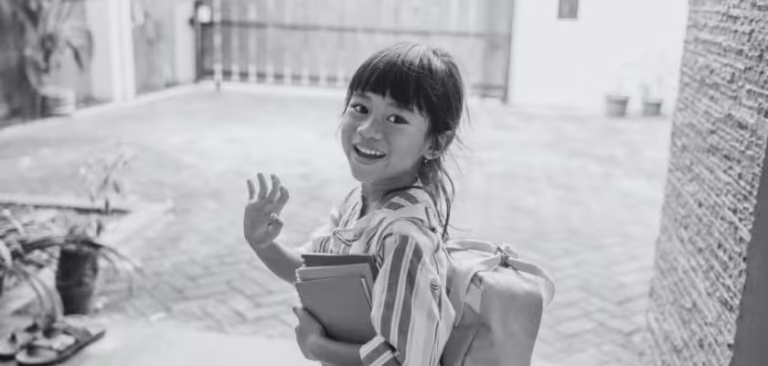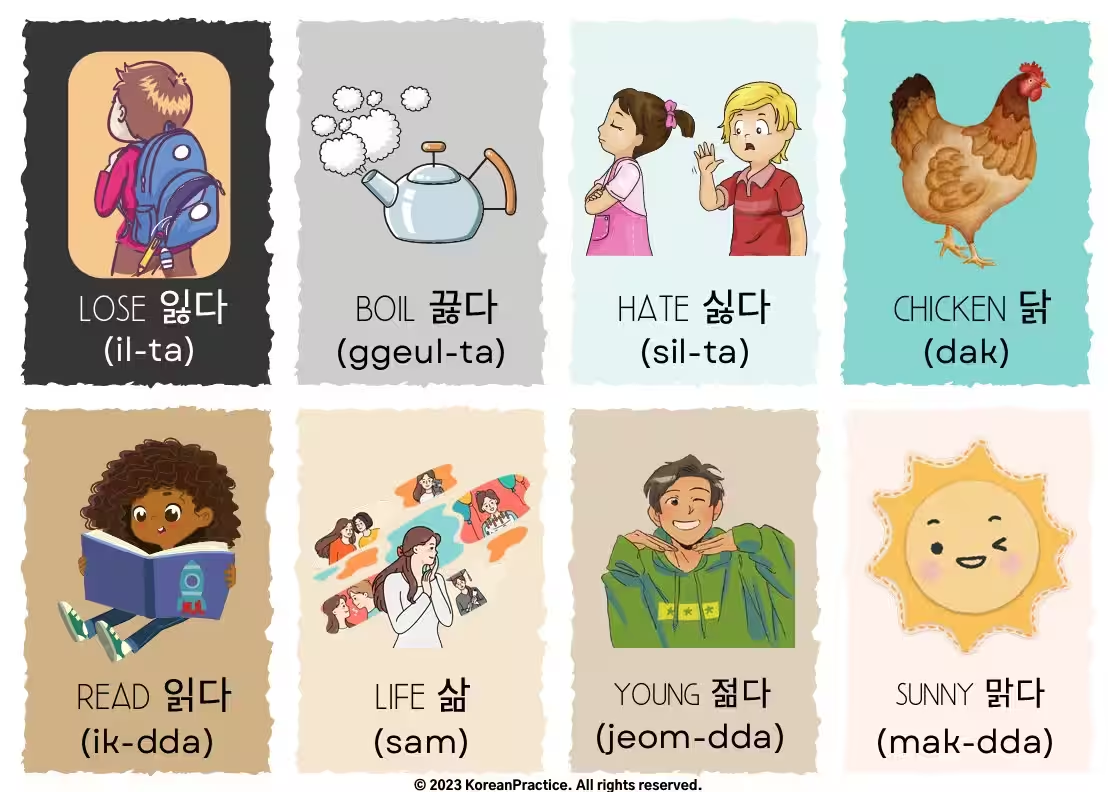Suh ChangWhoon
Written by 서 창훈, a certified Korean teacher with 14+ years of experience in Japan. He previously worked as a government officer, cybersecurity consultant, and English interpreter. Today, he teaches Korean in real classrooms without complex grammar explanations — instead, he trains students’ brains to speak naturally. His unique method is now the foundation of all his Korean courses.
Table of Contents
How do you say Goodbye in Korean Language
Are you curious about how to say goodbye in Korean? You’re in luck!
This guide will help you learn all about it. We’ll cover different ways to say goodbye in Korean language, so you can become confident in this important part of communication. Let’s dive in and explore together!
안녕 – Saying “Bye” the Casual Korean Way
Original Korean Sentence
A: 또 보자. B: 안녕.
Pronunciation Guide
A: 또 (ddo) 보자 (bo-ja). B: 안녕 (an-nyeong).
Meaning and Context
A: 또 보자 (See you again): A casual way to say “See you again” among friends. 또 (again) 보다 (to see) ” 자 (let’s; in a casual way).
B: 안녕 (Bye): An informal and friendly goodbye. It can also mean “Hello” in the right context.
Grammar
* 자: A casual suggestion ending, used when inviting someone to do something together.
Culture
In Korea, the formality of your speech reflects your relationship and respect for the other person. This informal exchange is typical between close friends or people of the same age.
English Translation
A: See you again.
B: Bye.
Literal Translation
A: Again let’s see.
B: Bye.
잘 가요 – “Go well” in Korean
Here’s another way to say goodbye in Korean, “go well” in Korean: 잘 가요. You say it when someone is leaving. “잘” means “well” and “가요” means “go.”
There’s also a casual version, “잘 가” (jal ga), which you use with friends and family.
Original Korean Sentence
A: 나 갈게. B: 잘 가요.
Pronunciation Guide
A: 나 (na) 갈께 (gal-gge). B: 잘 (jal) 가요 (ga-yo).
Meaning and Context
A: 나 (I; in a casual way) 가 (to go) * ㄹ게 (I will). A casual way to announce that you’re leaving.
B: 잘 (well) 가 (to go) 요 (I’m telling you to do this; in a polite and friendly way). A polite and warm way to wish someone a safe journey.
Pronunciation Patterns for Conjugations
* 가 + ㄹ = 갈. When rapidly pronounced, ‘가’ and ‘ㄹ’ naturally combine to form ‘갈’.
Grammar
* ㄹ/을게: A casual future tense ending, often used when making a decision based on a situation.
Culture
This exchange is common when one person is leaving and the other is staying. The person staying often wishes the departing person well.
English Translation
A: I’m going now.
B: Take care.
Literal Translation
A: I will go.
B: Go well.
잘 있어요 – “Stay well” in Korean
In Korean, there are two ways to say goodbye in Korean depending on whether you’re leaving or staying while the other person leaves. One is “잘 가요”, used when you’re staying.
The other to say goodbye in Korean is “잘 있어요”, used when you’re leaving and wishing the other person well. There’s also an informal version of this phrase, which is “잘 있어”. Dropping the 요 makes it informal. Explore how to say goodbye in Korean through these phrases!
Original Korean Sentence
A: 이제 갈 거예요?. B: 네, 잘 있어요.
Pronunciation Guide
A: 이제 (i-je) 갈 (gal) 꺼예요 (ggeo-ye-yo)? B: 네 (ne), 잘 (jal) 잇써요 (it-sseo-yo).
Meaning and Context
A: 이제 (now) 가 (to go) * ㄹ 거 (will) 예요 (I’m asking you polite and friendly)?.
B: 네 (yes; in a formal way), 잘 (well) 있 (to stay) 어요 (I’m telling you polite and friendly).
Pronunciation Patterns for Conjugations
* 가 + ㄹ = 갈. When rapidly pronounced, ‘가’ and ‘ㄹ’ naturally combine to form ‘갈’.
Grammar
* ㄹ/을 거예요: A polite future tense ending used to describe a planned or expected action.
Culture
In Korean culture, saying goodbye often includes polite well-wishing. The person staying typically says ‘잘 있어요,’ while the person leaving often hears ‘잘 가요.’
English Translation
A: Are you leaving now?
B: Yes, take care.
Literal Translation
A: Will (you) go now?
B: Yes, stay well.

안녕히 가세요 – Goodbye in Korean when someone is leaving
In Korean, there are two common ways to say goodbye in Korean depending on whether you’re leaving or the other person is leaving. “안녕히 가세요” is used when you’re staying and the other person is leaving.
Original Korean Sentence
A: 다음에 또 봐요. B: 안녕히 가세요.
Pronunciation Guide
A: 다으메 (da-eu-me) 또 (ddo) 봐요 (bwa-yo). B: 안녕히 (an-nyeong-hi) 가세요 (ga-se-yo).
Meaning and Context
A: 다음 (next) 에 (in) 또 (again) 보 (to see) 아요 (let’s; in a polite and friendly way). B: 안녕히 (peacefully) 가 (to go) * 세요 (please).
Pronunciation Patterns for Conjugations
* 보 + 아 = 봐. When rapidly pronounced, ‘보’ and ‘아’ naturally combine to form ‘봐’.
Grammar
* 세요: The honorific imperative form.
English Translation
A: See you again next time. B: Goodbye.
Literal Translation
A: Let’s see again in the next. B: Go peacefully.
안녕히 계세요 – How to say Goodbye in Korean when you are leaving
When you’re leaving and saying goodbye in Korean formal to someone who is staying, you’d use this phrase to mean something like “stay peacefully”.
Original Korean Sentence
A: 안녕히 계세요. B: 응. 잘 가.
Pronunciation Guide
A: 안녕히 (an-nyeong-hi) 계세요 (gye-se-yo). B: 응 (eung). 잘 (jal) 가 (ga).
Meaning and Context
A: 안녕히 (peacefully) 계시 (to stay; honorific form of 있다) 어요 (I’m telling you to do this; in a polite and friendly way). B: 응 (okay; in a casual way). 잘 (well) 가 (to go) 아 (I’m telling you to do this; in a casual way).
Pronunciation Patterns for Conjugations
* 계시 + 어요 = 계세요. When rapidly pronounced, ‘계시’ and ‘어요’ naturally combine to form ‘계세요’.
* 가 + 아 = 가. When rapidly pronounced, ‘가’ and ‘아’ naturally combine to form ‘가’.
English Translation
A: Goodbye (stay well).
B: Yeah, take care.
Literal Translation
A: Stay peacefully.
B: Yes, go well.
다음에 또 봐 – “See you again next time” in Korean
I bet you’re excited to learn goodbye in Korean informal beyond just the basics! One interesting phrase to know is “다음에 또 봐”, which means “see you again next time”.
Original Korean Sentence
A: 오늘 즐거웠어. B: 나도. 다음에 또 봐.
Pronunciation Guide
A: 오늘 (o-neul) 즐거웟써 (jeul-geo-wot-sseo). B: 나도 (na-do). 다으메 (da-eu-me) 또 (ddo) 봐 (bwa).
Meaning and Context
A: 오늘 (today) 즐겁 (to be enjoyable) 었 (past tense) 어 (is; I’m telling you casually). B: 나 (me) 도 (too). 다음 (next) 에 (in) 또 (again) 보 (to see) 아 (let’s; in a casual way).
Pronunciation Patterns for Conjugations
* 즐겁 + 었 = 즐거웠. When rapidly pronounced, ‘즐겁’ and ‘었’ naturally combine to form ‘즐거웠’.
* 보 + 아 = 봐. When rapidly pronounced, ‘보’ and ‘아’ naturally combine to form ‘봐’.
English Translation
A: I had fun today.
B: Me too. See you again next time.
Literal Translation
A: (It) was enjoyable today. B: Me too. Let’s see again in the next.
나중에 또 만납시다 – Let’s meet again later
Let’s speak about how to say goodbye in Korean formal. “나중에 또 만납시다” is a formal and polite way to suggest meeting at a later time. It’s commonly used in formal settings.
Original Korean Sentence
A: 회의가 끝났습니다. B: 나중에 또 만납시다.
Pronunciation Guide
A: 회의가 (hoe-ui-ga) 끈낫씀니다 (ggeun-nat-sseum-ni-da). B: 나중에 (na-jung-e) 또 (ddo) 만납씨다 (man-nap-ssi-da).
Meaning and Context
A: 회의 (meeting) 가 (my subject is the meeting) 끝나 (to be over) 았 (past tense) 습니다 (is; I’m telling you polite and formal way). B: 나중 (later) 에 (in) 또 (again) 만나 (to meet) ㅂ시다 (let’s; in a formal way).
Pronunciation Patterns for Conjugations
* 나 + 았 = 났. When rapidly pronounced, ‘나’ and ‘았’ naturally combine to form ‘났’.
* 나 + ㅂ = 납. When rapidly pronounced, ‘나’ and ‘ㅂ’ naturally combine to form ‘납’.
English Translation
A: The meeting is over. B: Let’s meet again later.
Literal Translation
A: Meeting was over. B: Let’s meet again in later.

저 먼저 갈게요 – “I’ll go first” in Korean
“저 먼저 갈게요” is a phrase of goodbye in Korean used to indicate that the speaker will depart or leave before others. It is a polite and considerate way to express the intention of being the first to leave in a given situation.
Explore this expression along with how to say goodbye in Korean to enhance your understanding of farewells in Korean culture!
Original Korean Sentence
A: 바빠요? B: 네. 저 먼저 갈게요.
Pronunciation Guide
A: 바빠요 (ba-bba-yo)? B: 네 (ne). 저 (jeo) 먼저 (meon-jeo) 갈께요 (gal-gge-yo).
Meaning and Context
A: 바쁘 (to be busy) 아요 (are; I’m asking you polite and friendly)? B: 네 (yes; in a formal way). 저 (I; in a humble way) 먼저 (first) 가 (to go) ㄹ게 (I will) 요 (I’m telling you polite and friendly).
Pronunciation Patterns for Conjugations
* 쁘 + 아 = 빠. When rapidly pronounced, ‘쁘’ and ‘아’ naturally combine to form ‘빠’.
* 가 + ㄹ = 갈. When rapidly pronounced, ‘가’ and ‘ㄹ’ naturally combine to form ‘갈’.
English Translation
A: Are you busy? B: Yes. I’ll go first.
Literal Translation
A: Are (you) busy? B: Yes. I’ll go first.
들어가세요 – “Please go in” in Korean
As a farewell greeting, this phrase in Korean translates to “Please go in.” It’s a kind way to wish someone a safe journey home, to work, or wherever they may be headed.
Original Korean Sentence
A: 오늘 감사했습니다. B: 네, 들어가세요.
Pronunciation Guide
A: 오늘 (o-neul) 감사햇씀니다 (gam-sa-haet-sseum-ni-da). B: 네 (ne), 드러가세요 (deu-reo-ga-se-yo).
Meaning and Context
A: 오늘 (today) * 감사하 (to thank) ㅆ (past tense) 습니다 (I’m telling you polite and formal way).
B: 네 (yes; in a formal way), * 들어가 (to go in) 세요 (please).
Pronunciation Patterns for Conjugations
* 하 changes to 해.
* 해 + ㅆ = 했. When rapidly pronounced, ‘해’ and ‘ㅆ’ naturally combine to form ‘했’.
Grammar
* 감사했습니다: Past tense of “to thank” in a formal setting.
* 들어가세요: Commonly used when someone is heading home, showing a wish for their safe return.
English Translation
A: Thank you for today. B: You’re welcome
Literal Translation
A: Today, I thanked. B: Yes, please go in.
조심히 가세요 – “Take care” in Korean
“조심히 가세요” is a common expression to say goodbye in Korean used to bid farewell and wish someone a safe journey. It directly translates to “Go carefully” or “Go cautiously,” but it is commonly understood as “Take care” in English. It’s a polite and caring way to express concern for someone’s well-being as they depart.
Original Korean Sentence
A: 그럼 다음에 봐요. B: 네, 조심히 가세요.
Pronunciation Guide
A: 그럼 (geu-reom) 다으메 (da-eu-me) 봐요 (bwa-yo). B: 네 (ne), 조시미 (jo-si-mi) 가세요 (ga-se-yo).
Meaning and Context
A: 그럼 (then) 다음 (next) 에 (in) 보 (to see) 아요 (let’s; in a polite and friendly way). B: 네 (yes; in a formal way), 조심히 (carefully) 가 (to go) 세요 (please).
Pronunciation Patterns for Conjugations
* 보 + 아 = 봐. When rapidly pronounced, ‘보’ and ‘아’ naturally combine to form ‘봐’.
English Translation
A: See you next time then. B: Yes, take care.
Literal Translation
A: Let’s see in the next then. B: Yes, Please go carefully

Start the Free Course
Still wondering how to read Korean?

This isn’t just another beginner lesson. It’s a complete system designed to change the way you think about Korean — from struggling with letters to reading real sentences, understanding the language, and speaking out loud with confidence.
Start the Story Course
Looking for super easy way to learn Korean?

Most Korean courses stop at grammar. Mine goes beyond — with stories, Story Style Breakdown™, and real practice to help you speak.
Free Korean Flashcard
FAQs (What You Might Still Wonder About)
1. ❓ Can I just wave instead of saying goodbye in Korean?
Yes, a friendly wave is common, especially with casual goodbyes like “안녕.”
2. ❓ What is the difference between saying goodbye in Korean and in Japanese?
In Korean, goodbye phrases often change based on who is leaving or staying, which is not always the case in Japanese.
3. ❓ Is it rude to just say 안녕 when leaving a formal meeting?
Yes, “안녕” is too casual for formal situations. It’s better to use “안녕히 가세요” or “안녕히 계세요.”
4. ❓ Do Koreans bow when saying goodbye?
Yes, in formal situations or when showing respect, Koreans often bow slightly when saying goodbye.
5. ❓ What’s the best goodbye phrase for a text message?
In casual texts, “잘 가” or “다음에 또 봐” are common. In formal messages, “안녕히 계세요” works well.
6. ❓ Is there a special goodbye for phone calls in Korean?
At the end of calls, people often say “들어가세요” or “안녕히 계세요,” depending on the formality.
Conclusion
In this conversation, we’ve explored various how to say goodbye in Korean, from informal expressions like “안녕” (annyeong) to more formal phrases like “안녕히 계세요” (annyeonghi gaseyo).
We’ve learned that these expressions not only convey goodbye in Korean but also convey well wishes for the other person’s safety and well-being.
Whether it’s saying “잘 가” (jal ga) to a friend or “조심히 가세요” (josimhi gaseyo) to someone you respect, each phrase carries its own nuances of politeness and care.
By understanding these nuances, we can navigate social interactions more effectively in Korean-speaking environments.
So, next time you bid farewell in Korean, remember how to say goodbye in Korean to choose the appropriate expression based on the context and relationship with the other person.



